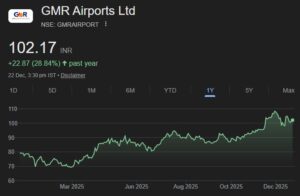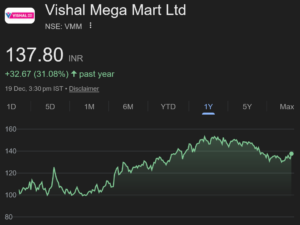Derivatives – Basics:
‘Risk’ is an inseparable part of investing in financial and capital markets. Every instrument that is available in these markets comes with a risk tag attached to it. To some investors, ‘high risk’ is attractive since it is usually associated with good returns. To others ‘high risk’ spells danger as it could result in loss of capital. It is the existence of risk in investing coupled with different investor risk profiles and perceptions that has given birth to the market for derivative products.
What are Derivatives”
Derivatives are financial contracts that derive their value from an underlying asset, which could be stocks or stock indices, commodities or currencies or even exchange rates or the rate of interest. As you have noticed, all these assets, which can be considered as ‘underlyings’ to a derivative product, are subject to change in value. More specifically, the value of a stock may rise or fall, an exchange rate may swing in favour of one currency or the other, the price of a commodity may increase or decrease, and so on. A feature that is common to all underlying assets is that they carry the risk of change in value. Derivative contracts seek to transfer these risks from a counterparty that is not comfortable with the risk to one that is.
From here on, we are going to take a closer look at two specific derivative products, namely futures and options and how they work, specifically with stocks (traded in the Indian equity markets) and indices (such as the Sensex or the CNX S&P Nifty) as the underlying asset.
Use of Derivatives:
In the Indian markets, futures and options are standardized contracts, which can be freely traded on exchanges. These could be employed to meet a variety of needs. Using these products can help you to reduce the cost of an underlying asset that you have purchased, earn money on shares that are lying Idle, benefit from arbitrage (buying low in one market and selling high in the other market) and protect your securities against fluctuations in prices. By far, the most important use of these derivatives is the transfer of market risk from risk-averse investors to those with an appetite for risk.
The derivative market in India, like its counterparts abroad, is increasingly gaining significance. Since the time derivatives were introduced in the year 2000, their popularity has grown manifold. This can be seen from the fact that the daily turnover in the futures segment on the National Stock Exchange currently stands at Rs 40,000 crore, which is nearly four times the turnover clocked in the cash markets on the same exchange.
Participants in the Derivatives Market:
On the basis of their trading motives, participants in the derivatives markets can be segregated into four categories – hedgers, speculators, margin traders and arbitrageurs. Let’s take a look at why these participants trade in derivatives and how their motives are driven by their risk profiles.
Hedgers
Hedgers are traders who wish to protect themselves from the risk involved in price movements. They look for opportunities to pass on this risk to those who are willing to bear it. They are so keen to rid themselves of the uncertainty associated with price movements that they may even be ready to do so at a predetermined cost. For instance, let’s say that you possess 200 shares of company ABC Ltd. and the price of these shares is hovering at around Rs 110 at present. Suppose you plan to sell these shares nearer Diwali, as you wish to utilise the funds to purchase some consumer goods during the season as you are likely to get a good deal on the purchase then. However, since Diwali is around a month from today, you fear that the price of these sharescould fall considerably by then. At the same time you do not want to encash your investment today as you may fritter away the money before Diwali. You are very clear about the fact that you would like to receive a minimum of Rs 100 per share and no less. At the same time, in case the price rises above Rs 100, you would like to benefit by selling them at the higher price. By paying a small price, you can purchase an arrangement in the form of a derivative product called an ‘option’ that incorporates all your above requirements. Fascinating, isn’t it?
The derivative market offers products that allow you to hedge yourself against a fall in the price of shares that you possess. It also offers products that protect you from a rise in the price of shares that you plan to purchase. And that’s only the tip of the iceberg. There are a wide variety of products available and strategies that can be constructed which allow you to pass on your risk to other market traders, who are more than willing to take it on.
Speculators
You may wonder why someone will willingly take on risks from you. The only explanation is that ‘it takes all types to make the world’. So while you may be averse to risks, there are people who embrace them, since risk and return always go hand in hand. Then again, while you believe that the market will go up, there will be people who feel that it will fall. These differences in risk profile and market views distinguish hedgers from speculators. Speculators, unlike hedgers, look for opportunities to take on risk in the hope of making returns. Let’s go back to our example, wherein you were keen to sell share of company ABC Ltd. after one month, but feared that the price would fall below your threshold price. In the derivative market, there will be a speculator who expects the market to rise. Accordingly, he will enter into an agreement with you stating that he will buy shares from you at Rs 100 if the price falls below that amount. In return for this risk that he will relieve you off, he must be paid a small compensation. He realizes that if his surmise is correct, and the price of ABC Ltd. rises, you will not want to sell shares to him anymore and he will get to pocket this compensation. This is only one instance of how a speculator could gain from a derivative product. For every opportunity that the derivative market offers a risk-averse hedger, it offers a counter opportunity to a trader with a healthy appetite for risk.
In the Indian markets, there are two types of speculators day traders and the position traders. A day trader tries to take advantage of intra day fluctuations and the up and down movement in prices. They do not leave any position open at the end of the day, i.e., they do not have any overnight exposure to the markets. On the other hand, position traders greatly rely on news, tips and technical analysis (the science of predicting trends and prices) and take a longer view, say a month, in order to realise better profits.





